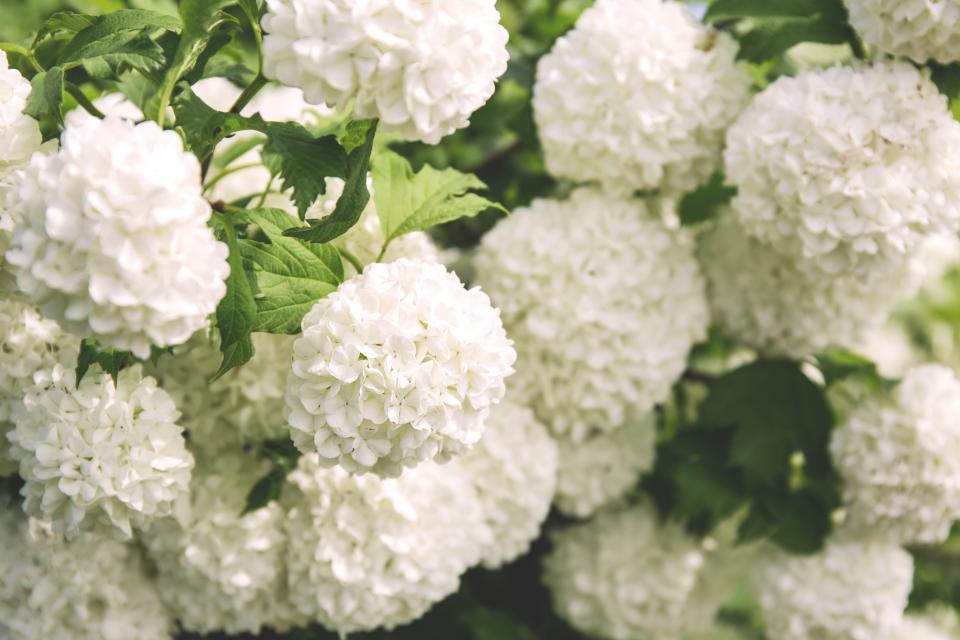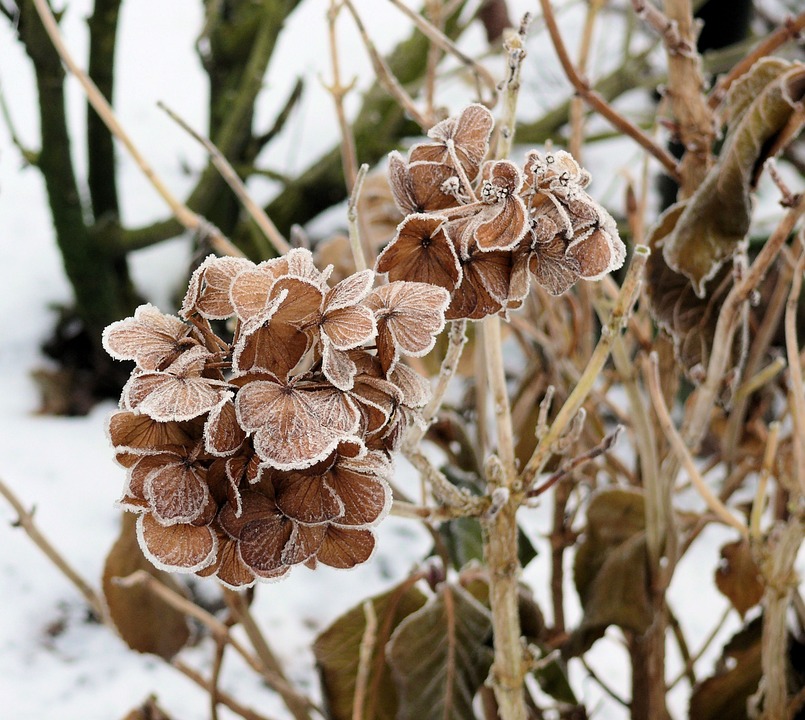This article delves into the question of whether hydrangeas pose a danger to cats, exploring the potential toxicity of these beautiful blooms. We'll examine the specific components that cause harm, the symptoms of hydrangea poisoning in cats, and the steps pet owners can take to ensure their feline companions' safety. Furthermore, we'll provide guidance on how to prevent accidental ingestion, what to do in case of poisoning, and offer valuable tips for keeping your cat safe around these popular garden plants.
Part 1: Understanding Hydrangea Toxicity

1.1 The Culprit: Hydrangeas and Cyanogenic Glycosides
Hydrangeas, with their vibrant blooms in hues of blue, pink, and purple, are a cherished sight in many gardens. However, these seemingly harmless plants contain a compound known as cyanogenic glycosides, which can be toxic to cats. Cyanogenic glycosides are naturally occurring substances found in various plants, including hydrangeas. These compounds, when ingested, break down into hydrogen cyanide, a potent poison that can interfere with cellular respiration. Hydrogen cyanide disrupts the body's ability to use oxygen, leading to a range of health problems.
1.2 The Science Behind the Toxicity
Cyanogenic glycosides are sugar molecules attached to a cyanide molecule. When these glycosides are ingested and broken down, they release hydrogen cyanide, a highly toxic gas that can rapidly affect the cardiovascular system, respiratory system, and central nervous system.
1.3 Which Parts of the Hydrangea Are Toxic?
All parts of the hydrangea plant are considered toxic, including the leaves, flowers, stems, and roots. Even a small amount of any of these parts can be harmful to cats. The concentration of cyanogenic glycosides may vary depending on the variety of hydrangea, its age, and growing conditions.
1.4 Why Cats Are Particularly Vulnerable
While all animals can be affected by hydrangea toxicity, cats are particularly susceptible due to their smaller size and higher metabolic rate. Ingesting even a small amount of hydrangea leaves or flowers can be detrimental to their health. Cats are also known for their curious nature and tendency to explore their surroundings by taste, which increases their risk of ingesting potentially toxic plants.
1.5 Severity of Poisoning: Factors to Consider
The severity of hydrangea poisoning in cats depends on several factors:
- Quantity Ingested: The larger the amount of hydrangea consumed, the more severe the poisoning.
- Cat's Size: Smaller cats are more vulnerable than larger cats.
- Individual Sensitivity: Some cats may be more sensitive to the toxins than others.
- Health Status: Cats with pre-existing health conditions may be more susceptible to the effects of hydrangea poisoning.
Part 2: Recognising the Symptoms of Hydrangea Poisoning in Cats

2.1 Early Warning Signs
Early symptoms of hydrangea poisoning in cats can be subtle and easily overlooked. It's crucial to be observant and act promptly if you notice any of the following:
- Loss of Appetite: Your cat may refuse to eat or show decreased interest in food.
- Lethargy: The cat may appear sluggish, tired, or less active than usual.
- Vomiting and Diarrhoea: Digestive upset, including vomiting and diarrhoea, can occur, often with a watery consistency and a foul odor.
- Excessive Drooling: Your cat may drool more than usual, as their salivary glands try to flush out the toxins.
- Weakness: The cat may appear unsteady on its feet or have difficulty walking.
2.2 More Severe Signs of Poisoning
If the poisoning progresses, the symptoms become more severe and life-threatening. Watch out for:
- Rapid Breathing: Your cat's breathing may become fast and shallow, indicating difficulty breathing.
- Panting: The cat may pant excessively, even when not hot, as their body tries to compensate for oxygen deprivation.
- Weakness and Tremors: Muscle weakness and tremors can develop, leading to difficulty moving.
- Seizures: In severe cases, seizures may occur, characterized by involuntary muscle contractions and loss of consciousness.
- Collapse: Your cat may collapse due to weakness or respiratory failure, leading to unconsciousness and potential death.
- Dilated Pupils: The cat's pupils may become dilated, indicating an effect on the nervous system.
- Blueish Gums: In severe cases, the cat's gums may turn bluish, a sign of oxygen deprivation (cyanosis).
Part 3: Prompt Action: What to Do If Your Cat Ingests Hydrangea

3.1 Time is of the Essence
If you suspect your cat has ingested hydrangea, prompt action is essential. Every minute counts. The quicker you act, the better the chances of your cat making a full recovery.
3.2 Immediate Steps
- Remove Any Remaining Hydrangea: Immediately remove any remaining hydrangea parts from your cat's reach to prevent further ingestion.
- Contact Your Vet: Call your veterinarian immediately and describe the situation in detail. Let them know what type of hydrangea, how much was ingested, and when it happened.
- Observe Your Cat Carefully: Monitor your cat closely for any signs of poisoning. Note the time the symptoms start and how they develop. This information will be valuable for your veterinarian.
- Gather Information: Be prepared to provide your veterinarian with information such as:
- What type of hydrangea the cat ingested (e.g., bigleaf hydrangea, panicle hydrangea)
- How much the cat ingested (e.g., a few leaves, a whole flower head)
- When the ingestion occurred (e.g., 10 minutes ago, yesterday)
- Any pre-existing health conditions your cat has.
3.3 Potential Veterinary Treatments
Your veterinarian may recommend the following treatments, depending on the severity of the poisoning and the time since ingestion:
- Inducing Vomiting: If ingestion is recent, your vet may induce vomiting to remove the hydrangea from the cat's stomach. This is usually done using medication or a specific solution administered by your veterinarian.
- Activated Charcoal: Administering activated charcoal can help absorb toxins and prevent them from being absorbed into the bloodstream. This can be given orally or via a tube by your veterinarian.
- Fluid Therapy: Intravenous fluids may be administered to help prevent dehydration and support the kidneys, as hydrogen cyanide can damage these organs.
- Oxygen Therapy: If breathing is compromised, oxygen therapy may be necessary to help your cat breathe easier and get the oxygen they need.
- Anti-Seizure Medications: If seizures occur, anti-seizure medications may be prescribed to help control seizures and protect your cat from further harm.
- Supportive Care: Your veterinarian may provide supportive care, such as monitoring vital signs, managing pain, and addressing any other complications that arise.
Part 4: Preventing Hydrangea Poisoning in Cats
4.1 Keeping Hydrangeas Out of Reach
- Fence Off Areas: If you have hydrangeas in your garden, consider fencing off the areas where they are planted to prevent your cat from accessing them. A physical barrier can create a safe space for your cat while still allowing you to enjoy the beauty of your hydrangeas.
- Plant Alternatives: Choose cat-friendly plants as alternatives to hydrangeas. Many beautiful and fragrant plants are non-toxic to cats, such as catnip, lavender, and rosemary. Consult with a local nursery or garden centre for advice on safe plant options for your feline friend.
- Indoor Plants: If you have hydrangeas indoors, keep them in areas inaccessible to your cat, such as high shelves, hanging baskets, or rooms that your cat doesn't frequent. Alternatively, consider planting hydrangeas in a closed container with a secure lid to prevent access.
- Supervise Outdoor Play: When your cat plays outdoors, supervise them to ensure they don't nibble on any hydrangeas. Be especially vigilant during periods of curiosity or exploration, such as after a thunderstorm or when you introduce new plants to your garden.
4.2 Educating Children: A Vital Step
- Explain the Risks: Teach children about the dangers of hydrangeas to cats and the importance of keeping them away from the plants. Use simple language and age-appropriate explanations to help them understand the risks. You can also use visual aids, such as pictures or videos, to enhance their understanding.
- Supervise Interaction: Supervise children when they are around hydrangeas to prevent them from accidentally dropping leaves or flowers that could be ingested by your cat. It's best to teach them to always wash their hands after touching hydrangeas to avoid transferring any toxins to your cat.
Part 5: FAQs About Hydrangea Toxicity and Cat Safety
5.1 Are All Types of Hydrangeas Poisonous to Cats?
Yes, all types of hydrangeas contain cyanogenic glycosides, which can be toxic to cats. This includes popular varieties such as bigleaf hydrangeas, panicle hydrangeas, and oakleaf hydrangeas.
5.2 Are Dried Hydrangeas Also Poisonous?
Yes, even dried hydrangeas retain their toxicity. It's best to keep dried hydrangea arrangements out of reach of your cat. The drying process doesn't remove the toxins, so it's best to avoid any potential for ingestion.
5.3 Can Cats Get Sick From Just Touching Hydrangeas?
It's unlikely that a cat will get sick from simply touching a hydrangea plant. The toxins are more dangerous when ingested. However, it's best to discourage your cat from playing with hydrangeas altogether. If they're tempted to rub against the plant, redirect their attention with toys or other activities.
5.4 Is Hydrangea Poisoning Always Fatal?
Hydrangea poisoning is not always fatal, but it can be very serious and even life-threatening, especially if left untreated. Early intervention and appropriate veterinary care are crucial for improving your cat's chances of survival.
5.5 How Long Does It Take for Symptoms to Appear After Ingestion?
Symptoms of hydrangea poisoning can appear within a few minutes to a few hours after ingestion, depending on the amount ingested, the cat's size, and its individual sensitivity. However, some cats may not show signs of poisoning until several hours or even a day later.
5.6 What Other Plants Should I Keep Away From My Cat?
Many common houseplants and garden plants are toxic to cats. Other poisonous plants to avoid include lilies (all varieties), tulips, daffodils, azaleas, rhododendrons, oleander, and sago palms. You can find comprehensive lists of toxic plants online or through your veterinarian.
5.7 How Can I Keep My Cat Safe Around Plants?
The best way to keep your cat safe around plants is to:
- Choose non-toxic plants for your home and garden: Opt for cat-friendly plants that are known to be safe for your feline companion.
- Keep potentially poisonous plants out of reach of your cat: Use fences, barriers, or other methods to create a safe zone for your cat.
- Supervise your cat when they are around plants: Pay attention to your cat's behavior, especially when they're exploring new areas or showing curiosity towards plants.
- Consider using deterrent sprays: There are commercially available deterrent sprays designed to discourage cats from chewing on plants.
Remember, it's always best to err on the side of caution when it comes to your cat's health. If you have any concerns about your cat's well-being, contact your veterinarian immediately. Prompt action and veterinary care are essential for ensuring your furry friend's safety and well-being.
Everyone is watching
-

Are Cat Ribs Flexible? Understanding Their Anatomy
CATS & KITTENSThis article delves into the fascinating world of feline anatomy, exploring the flexibility of cat ribs and ho...
-

Can Cats Eat Bananas? (Everything You Need to Know)
CATS & KITTENSThis article dives into the intriguing question of whether cats can safely enjoy the sweet, yellow fruit, bana...
-

Cat Lifespan: How Long Do Cats Live?
CATS & KITTENSThis comprehensive guide explores the factors influencing the lifespan of our feline companions, providing ins...
-

Can Cats Get COVID-19? What You Need to Know
CATS & KITTENSThis article will delve into the fascinating world of feline COVID-19 susceptibility. We'll explore whether ca...
-

Can Cats Eat Eggs? A Complete Guide to Egg Safety for Your Feline Friend
CATS & KITTENSWhen it comes to treating our furry companions, we all want to ensure we're doing what's best for them. Eggs...
